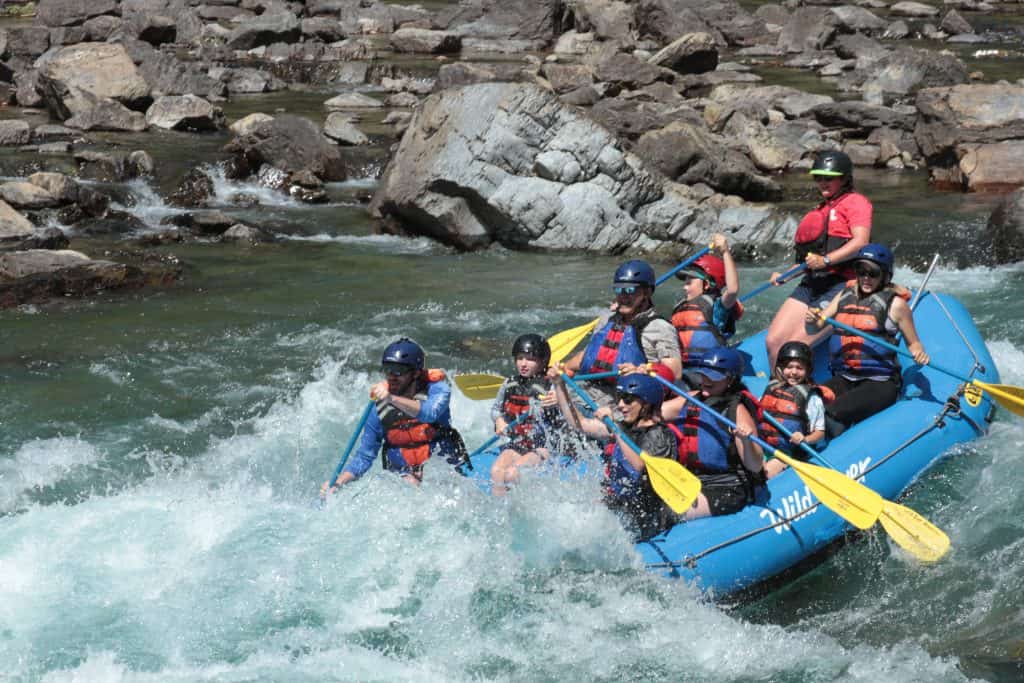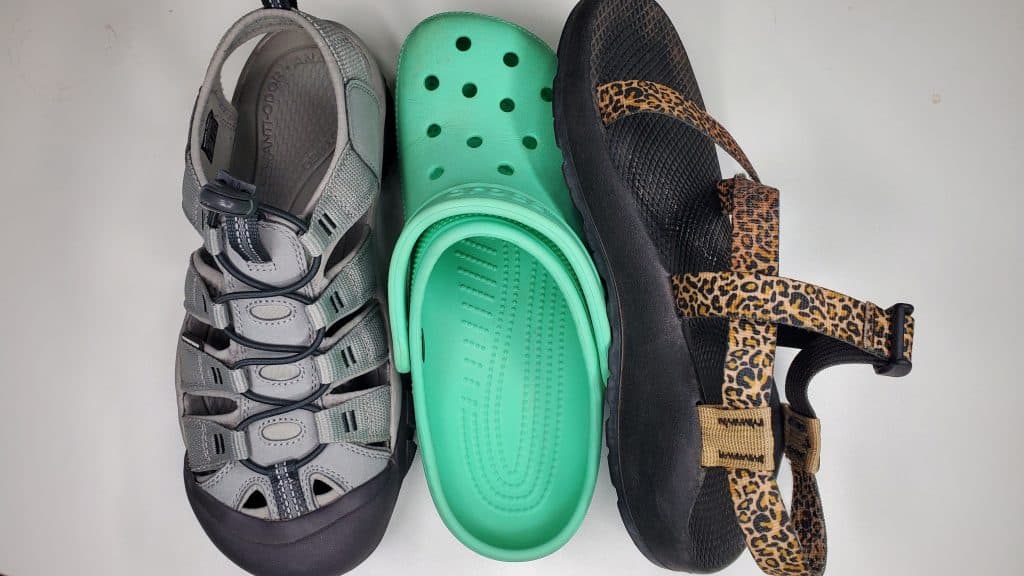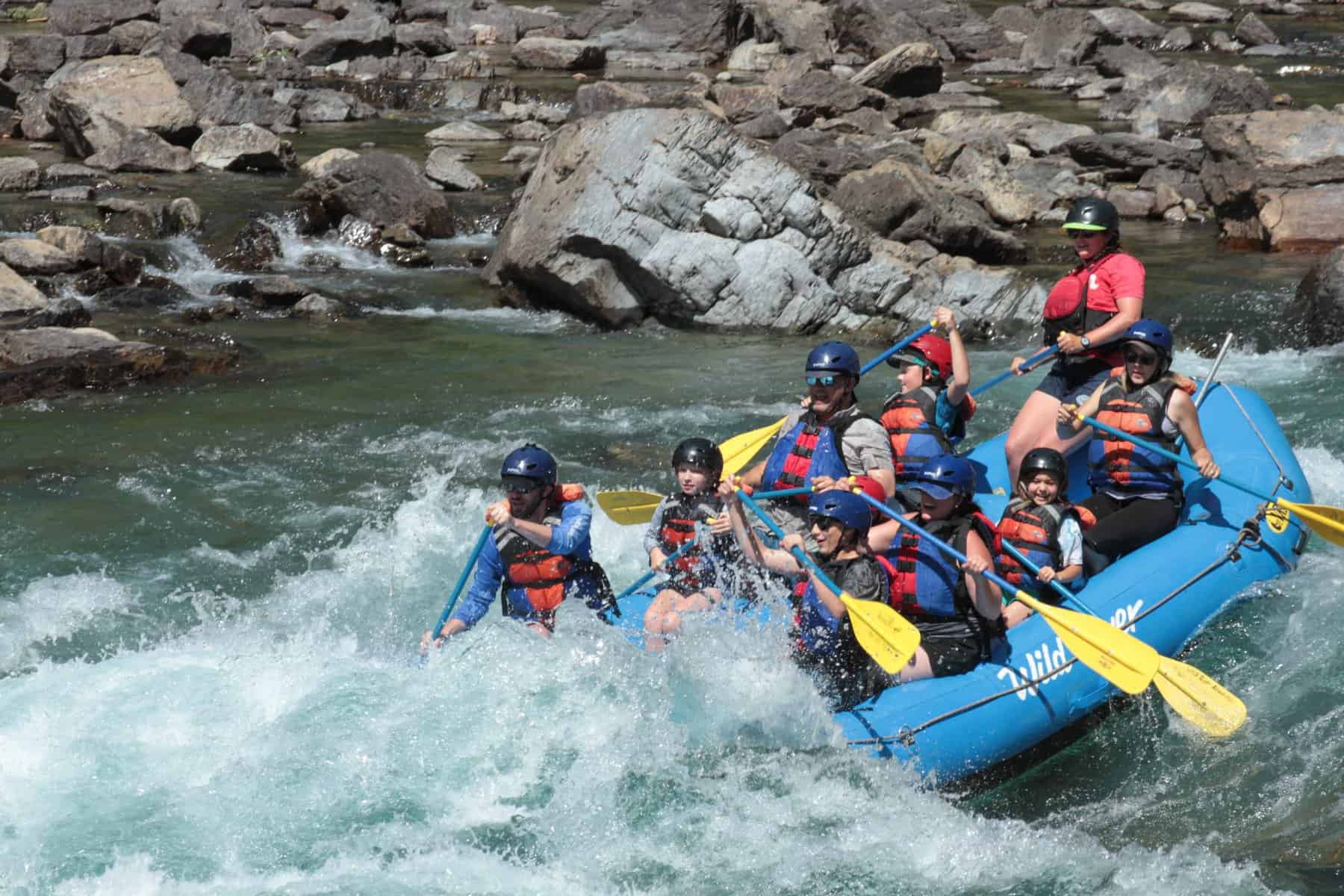White water rafting is an adventure like no other! It is thrilling and upredictable. The same rapids will be different each time you approach them. Every water adventure will have its own, unique set of stories. And once you enjoy your first white water adventure, you will surely fall in love and crave more time amongst the rapids.
Although part of the thrill is unpredictability, that can also create an extra set of challenges. How do we prepare for any weather, any conditions, and any unknowns?
Well, we start with the basics.
Below, I share tips, tricks, and lists based on my own rafting adventures as well as advice from top rafting outfitters. With some thoughtful preparation, you will find everything you need to prepare for your next rafting adventure!
What to Wear White Water Rafting
The most fundamental truth of white water rafting is that you should be prepared to get wet. Without the rapids crashing into your raft, this would merely be a float! Plan to get wet!
Clothing for white water Rafting
Your clothing should reflect the anticipated temperatures of the trip. If you are white water rafting during colder months, you will absolutely want a full wet suit.
However, most families and outfitters tackle the rapids during the warmest months. In this case, you will want hot weather gear that will help to keep you cool but keep you from getting cold.
Our first tip is to wear quick-dry clothing. Many outdoor brands advertise clothing as “quick-dry.” However, you can identify this type of material without the marketing prompt by looking for fabrics that do not retain moisture such as polyester.
For example, cotton does retain moisture and does not dry quickly. Therefore, we strongly suggest that you do not wear cotton when white water rafting. Even in the event that you are rafting in painfully hot weather, the wet, heavy cotton clothing that may keep you cool a bit longer may also create some chafing discomfort.
Underwear and Swimsuits for Rafting
There are two primary considerations when selecting underwear and swimsuits for your white water adventure. First, chafing. You will, again, want to select undergarments that will dry quickly and will not create uncomfortable rubbing. Do not wear cotton underwear.
The other consideration is primarily for the ladies. Given the lack of restrooms along the rivers, it is most advisable that you wear a two-piece swimsuit.
Sun Protection
Although rafting during summer months may be great for your vitamin D creation, it is not so great for your skin. You should be highly aware of your skin’s exposure to the sun.
Many people choose to wear quick-dry water shirts or rash guards. I like this inexpensive option from Amazon. It is 100% polyester, so it is quick-drying and offers UV protection.
When selecting any swim shirts or rash guards, remember to consider how the color will affect you. For example, when I am on my summer rafting adventures, I do not want to wear a black or dark-colored swim top that will draw heat to my body. I prefer light colors to stay cool.
A second major consideration for sun protection is a hat. Most rafters will wear fishing-style hats such as this one. Unlike a baseball cap, the wide, full-circle brim of a fishing hat will keep the sun off of your neck and ears.
Additionally, the hat or cap should be secured to your head. A cord that you can draw towards your chin will be helpful if the hat does not fit your head tightly. If you fall overboard into the river, you will be grateful for all of your gear that is strapped to your body, especially your hat!
Speaking of straps and sun protection, you will absolutely want sunglasses with straps! You can buy packages of very inexpensive sunglass straps such as these, or you can invest in high quality, floating straps such as these.

Rain Protection
Yes, it may rain on your white water rafting trip. You will likely schedule your trip far in advance without clarity on the day’s weather. Unless thunderstorms are in the area, most rafting outfitters will not cancel trips for rain.
Light rain may feel good on brutally hot days, but, often, if you get wet and there is any breeze, you can quickly start to feel cold. We recommend that you take a rain jacket on your trip.
You will want a jacket that is not longer than hip-length. It will be best if you can tighten the wrist cuffs. This will keep out more of the rain, and it will keep you from catching the paddle in a dangling cuff.
For hot weather, you may want to ensure that your rain jacket has hidden vents that can be adjusted for comfort.
You will also remain far more comfortable using a hooded rain jacket while rafting.
If you are rafting during shoulder season or you are prone to getting cold, you may also consider rain pants and wetsuit-style, neoprene socks. Our next rafting trip is through the Grand Canyon, and although it will get hot during the day, I have neoprene socks to help me stay warm while rafting during the cooler mornings.
Cold Protection
There is cold-cold, and there is wet-cold. If you are prone to being cold, we suggest that you prepare for both!
To prevent “wet-cold,” take your rain gear very seriously. Consider the rain pants and the neoprene socks.
To prevent getting cold during breezy or shoulder-season days, we suggest that you use your rain jacket to shield the wind. Alternatives could be black-colored sun shirts or rashguards. You could also wear a zip-up layer between your rain jacket and your sun shirt.
Whatever you do, be sure that your top, exposed layer is always waterproof or quick-drying.
Skin Protection
Recall that wet and rubbing are the enemies of a great time! Be cognizant of any rub from your clothing choices, and test them all as much as possible before a long trip.
Two important options that we suggest that you include in your pack are fingerless gloves and leukotape.
Whether you will be paddling or holding onto a rope, your hands will be wet while exposed to a rough surface. If you are prone to discomfort or if you are going on a longer trip than normal, the fingerless gloves may be a good piece of gear to have. They will protect you from blisters.
The leukotape is also a great choice for rafting. Unlike moleskin, leukotape is thinner with a higher quality adhesive. If there is any place on your body that starts to rub, you can quickly slap a piece of leukotape on it and keep enjoying your trip!
What to wear while white water rafting:
Here is the rundown of items we have discussed so far…
- Light colored sun shirt
- Swim suit – two-piece for the ladies
- Fishing hat
- Sunglasses with strap
- Rain jacket
- Rain pants
- Neoprene socks
- Fishing/paddling gloves
Best White Water Rafting Shoes
There are three things to consider when selecting shoes for white water rafting. First is warmth. If you are rafting in very cold temperatures, you will want completely waterproof shoes.
The second thing to consider is how well they stay on your feel. Most rafting outfitters require that guests wear shoes with heel straps. You don’t want your shoes falling off in the river. That will make for an unpleasant, possibly painful experience!
The third thing to consider is comfort. You do not want shoes that get wet and rub your feet raw.

Should you wear flip-flops on a rafting trip?
No. You do not want to wear flip-flops on a rafting trip. These are likely to slide off of your feet and float away during your river time. If you will be stopping on the banks of the river for overnight camping, the flip-flops may be a good option to change into at camp. However, they are not appropriate footwear for the raft.
Should you wear Crocs on a rafting trip?
No. You do not want to wear Crocs on a rafting trip. Although many Crocs do have heel-straps, they were created to be loose and bulky. They are likely to slide off and float away if your feet get submerged or you are pushed around on the raft. Their bulky nature may also prevent you from maneuvering your feet into new positions on the boat. Crocs, too, are great shoes to have with you if you will be camping on the banks of the river; however, they are not appropriate for rafting.
Should you wear water shoes on a rafting trip?
It depends. You can wear water shoes. The benefits are that the water flows through them and they have a sole. However, you need to assess whether the sole is sturdy enough to comfortably walk on the rocky river banks. Generally, water shoes have a thin sole that is best for sand or finely-pebbled beaches. In our experience, we find their elastic a little loose and prone to sliding off our feet more often than we would like.
We do not recommend water shoes for a rafting trip.
Should you wear Chacos on a rafting trip?
It depends. Chacos have heavy, sturdy soles. Their adjustable straps also help to ensure that they do not fall off of your feet no matter the conditions.
However, there are two issues with wearing Chacos on a rafting trip. First of all, when the straps get wet, they rub a lot of people uncomfortably. Personally, I cannot wear Chacos when they are wet or I will quickly develop painful blisters. My husband, however, has no problem wearing wet Chacos.
The other thing to consider is that some river outfitters require that guests wear closed-toe shoes while rafting. You should check with your guides ahead of time to ensure that these would be allowed on your journey.
Should you wear Tevas on a rafting trip?
While Tevas have a strap configuration similar to Chacos, they are made of a different material. You will want to assess how likley your Tevas are to rub when wet. Also, ensure that your Tevas or Teva-like shoes have a sturdy sole to protect your feet from the rocks.
Finally, like Chacos, some river outfitters will not allow guests to wear open-toed shoes on the the rafts. Check with your guides before your tirp.
What are the BEST shoes for summer rafting trips?
In our experience, the shoes that are most sturdy, protective, and comfortable for summer rafting are Keens. You can find other brands that are designed in very similar ways.
Their thick soles, open-air design, closed toes, and tightening cords make them great options for any river adventure.
Conclusion
What you wear for a white water rafting trip is really about keeping you comfortable. There is always variability in the weather and the conditions. Sometimes, the nature of being outdoors includes a few shivers or some sweat. With our suggestions, you will be as prepared as possible with your outdoor wear for your next epic, white-water adventure!
If you’re heading out to the Smoky Mountains this summer, check out our post on the best rivers and guides in North Carolina’s Smoky Mountains!

